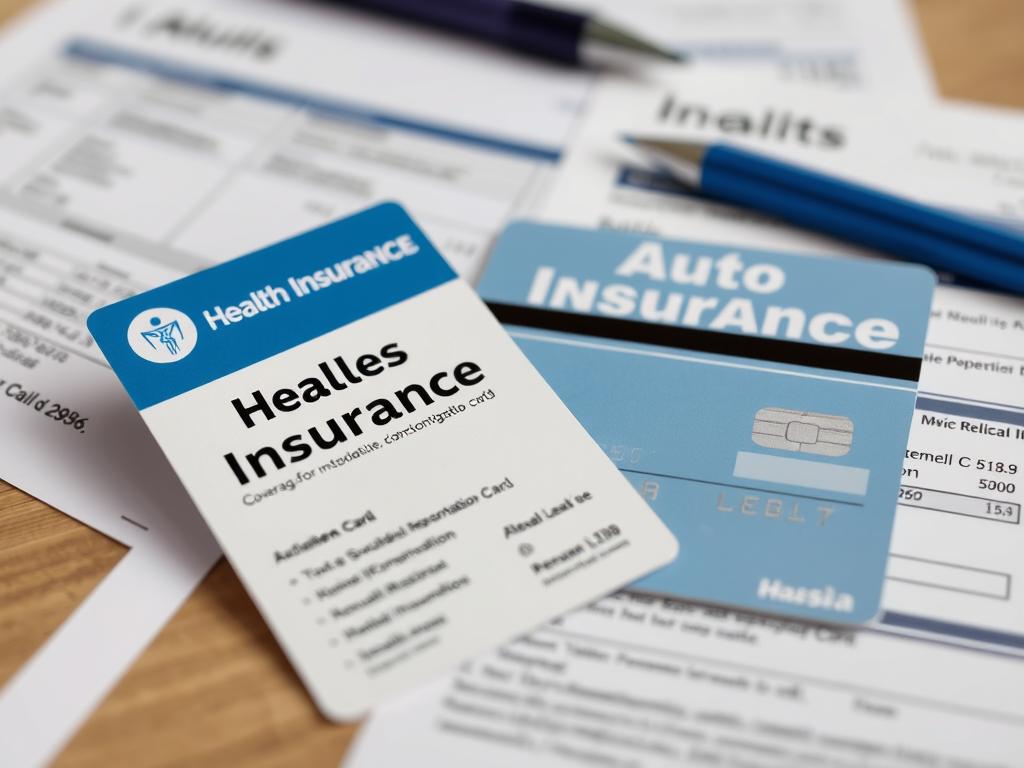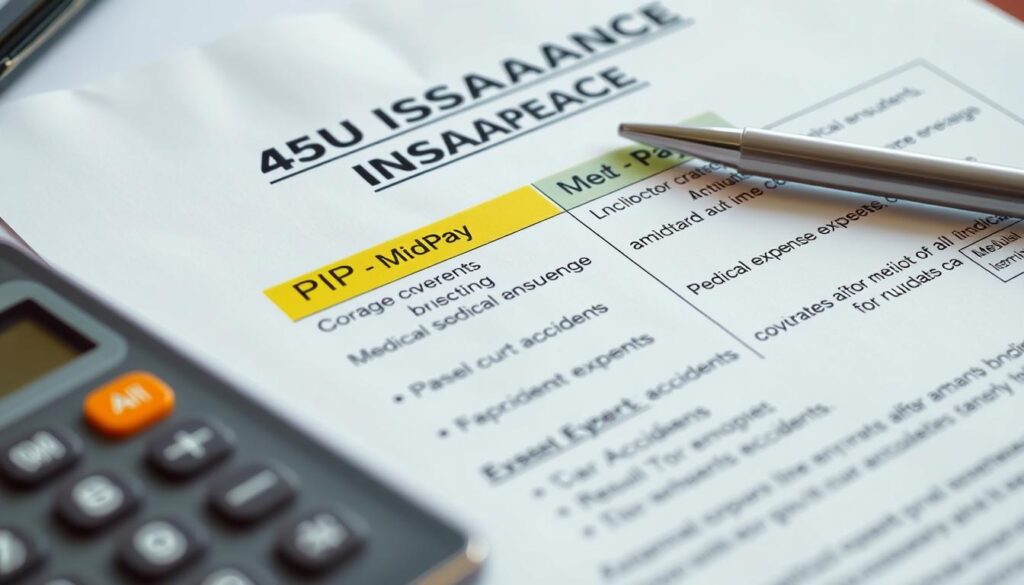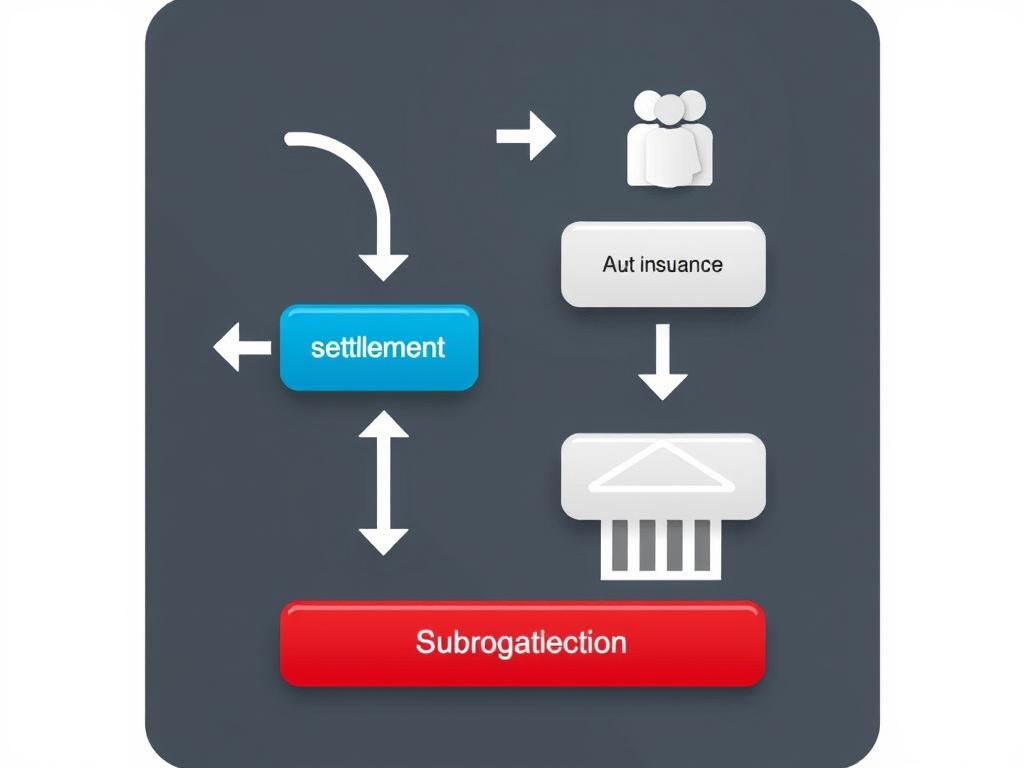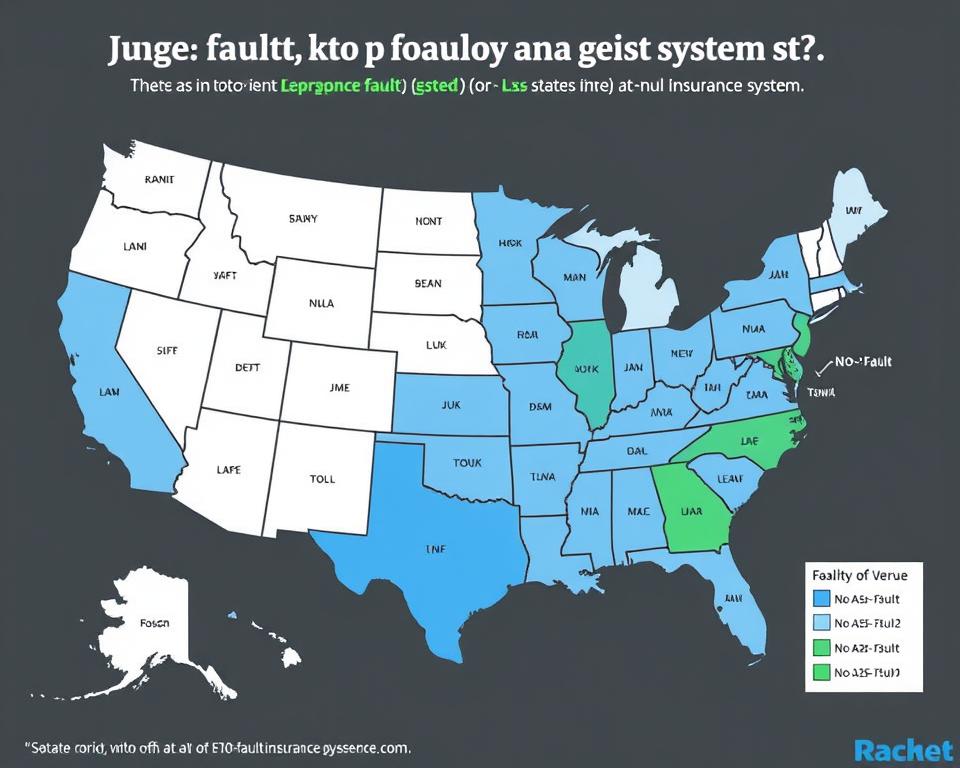This guide is for drivers, passengers, pedestrians, and cyclists who want straight talk — no legalese. We’ll walk through who pays first, common out-of-pocket medical expenses you might face, and simple steps to protect your health and your wallet.
- Who pays first: health insurance vs. auto insurance
- Common out-of-pocket costs and how to avoid surprise medical bills
- Quick tips on documenting injuries and when to call an attorney
One-sentence takeaway: your health insurance can cover accident-related medical bills, but auto coverages like PIP or MedPay often pay first — read on to learn how to notify insurers, limit out-of-pocket costs, and handle subrogation. Want a quick action list? Jump to the FAQ below for bite-sized answers about medical bills, coverage, and next steps.
Health Insurance and Car Accidents: The “Payer of Last Resort” Principle
- Health Insurance and Car Accidents: The "Payer of Last Resort" Principle
- Auto Insurance Coverage: Your First Line of Defense
- Navigating the Maze: Coordination of Benefits, Subrogation, and Accident Insurance
- Beyond Insurance: Crucial Medical and Legal Steps After a Car Accident
- When to Call a Lawyer: Protecting Your Rights and Maximizing Recovery
- State-Specific Car Accident Coverage Overview
- Practical Steps After an Accident
- Reviewing Your Insurance Coverage
- Conclusion: Protecting Your Health and Financial Recovery
- Frequently Asked Questions
Quick bullets — when health insurance typically steps in:
- You don’t have MedPay or PIP on your auto policy.
- Your auto medical limits are exhausted (example below).
- You’re a pedestrian, cyclist, or another non-driver with no auto policy to claim against.
- You live in a state where auto medical coverages aren’t required or you opted out.
The short answer: yes — health insurance may cover injuries from a car accident, but it usually serves as the payer of last resort. In most cases, auto coverages like PIP or MedPay — or the at-fault driver’s liability insurance — pay first. Your health plan generally covers remaining approved charges once those auto limits are used up or when no auto policy applies.
Mini scenario: say you’re hit while biking and there’s no applicable auto policy. Or imagine you have $5,000 in MedPay but $15,000 in medical bills — MedPay typically covers the first $5,000, and your health insurance may cover much of the rest, subject to your deductible, copays, and network rules. That means you could still face pocket expenses.
What health plans usually cover after a car accident (plan rules and networks apply):
- Emergency room visits
- Hospital stays
- Imaging (X-ray, CT, MRI)
- Surgeries
- Physical therapy and rehabilitation
- Prescription medications
- Follow-up outpatient care

Important note: deductibles, copays, and coinsurance still apply — and those can add up. Out-of-network providers or services needing prior authorization may be billed differently or denied. Also remember government payers (Medicare/Medicaid) have special recovery rules — we cover that later.
Action checklist for patients (do these early): notify both insurers and get claim numbers, clearly state the care is accident-related, and ask your provider if they need special billing codes (CPT/ICD modifiers) for auto claims. Save this checklist and jump to the Practical Steps section for a printable version.
Micro-FAQ — Will my deductible apply? Often yes: your health deductible and copays generally apply unless auto coverages (PIP/MedPay) pay those amounts or a settlement later reimburses you.
Auto Insurance Coverage: Your First Line of Defense
After a crash, your auto insurance is usually the first place medical bills land. Knowing which parts of your car insurance policy cover medical costs helps you act fast and avoid surprises. This applies to your own policy and the at-fault driver’s policy — below are the key coverages and when they help.
Personal Injury Protection (PIP)
PIP is an auto insurance add-on that pays for medical care regardless of who caused the accident (state rules vary). Beyond basic medical care, PIP often covers things many health plans don’t, like:
- Lost wages if you can’t work
- Essential services (childcare, housekeeping) you can’t do while injured
- Funeral expenses in fatal cases
When it helps: PIP is great for immediate medical costs and short-term income loss while liability is sorted. Limits and rules change by state — check the State-Specific section or your state’s DOI for current details.
| State | PIP Requirement | Coverage Details |
| Florida | Mandatory | Covers a portion of medical expenses and lost wages up to policy limits; some claims require timely treatment (check current rules). |
| Michigan | Mandatory with options | Recent reforms let policyholders choose limits or opt out of certain PIP benefits — review your policy carefully. |
| Texas | Optional (must be offered) | Insurers typically offer a basic PIP option that you may decline in writing; check your declarations page for limits. |
Medical Payments Coverage (MedPay)
MedPay is medical-only auto coverage that pays for treatment of you and your passengers regardless of fault. It usually doesn’t cover lost wages or household services — just medical bills. MedPay limits are often modest but can help with immediate ER or urgent care costs.
When it helps: think of MedPay as first-dollar help to reduce early out-of-pocket medical costs while larger liability or health claims get sorted.
Liability and UM/UIM: When the Other Driver Pays (or Doesn’t)
In at-fault states, the at-fault driver’s liability insurance should cover your medical costs — but those claims can take time to investigate and settle. If the other driver has little or no insurance, your Uninsured/Underinsured Motorist (UM/UIM) coverage can fill gaps up to your policy limits.
Why health insurance still matters: every insurance policy has limits and deductibles. If liability or UM/UIM payouts are delayed or insufficient, your health insurance may cover remaining approved medical expenses (subject to coordination of benefits and subrogation).

Which to use first? Quick rule of thumb: use PIP/MedPay first when available (they’re designed for immediate accident-related costs). If the other driver is clearly at fault and has liability insurance, that carrier may pay after liability is determined — but payouts can take time.
Quick checklist to find your PIP/MedPay limits on your insurance policy:
- Open your declarations page — look for “PIP,” “MedPay,” or “Medical Payments.”
- Note the dollar limits and any time-to-treatment requirements.
- If unsure, call your agent and ask for the exact limits and whether you opted out in writing.
Simple example (illustrative): if you have $5,000 in MedPay and $15,000 in medical bills, MedPay typically pays the first $5,000. After that, health insurance or the at-fault driver’s liability policy may cover the remainder — all subject to policy limits, deductibles, and coordination of benefits (COB). For details on how payers coordinate, see the Coordination of Benefits section.
Navigating the Maze: Coordination of Benefits, Subrogation, and Accident Insurance
Coordination of Benefits (COB)
Plain English: when more than one insurance plan could pay for the same care, Coordination of Benefits (COB) decides who pays first. In many car accident cases, auto coverages like PIP or MedPay pay initial bills and your health insurance covers remaining approved charges, subject to your deductible and copays.
Short example: MedPay pays the first $5,000; your health insurance may then cover most of the remaining $10,000, minus any deductible or coinsurance. Even with two payers involved, you can still face out-of-pocket medical expenses.
Subrogation: The Insurer’s Right to Reimbursement
Subrogation is when an insurer who paid your medical bills later seeks repayment from the at-fault party’s settlement. In human terms: the insurer fronted the cash, then tries to get it back from whoever caused the crash.
Will subrogation reduce your payout? Possibly. Quick math: Settlement − insurer’s lien = your net recovery. Example: a $50,000 settlement minus a $10,000 lien leaves $40,000 — and that’s before attorney fees and expenses. Good news: an attorney may be able to negotiate the lien down or defer repayment, which can bump up what lands in your pocket (sometimes by a notable percentage).
Important for government payers: Medicare and Medicaid often have stronger statutory recovery rights and formal lien processes. If they paid any medical bills, tell your attorney right away — missing this step can hurt what you ultimately keep.
What to Ask Your Insurer or Attorney
- What is the exact amount of the subrogation lien and how was it calculated?
- Will the insurer accept a reduced lump-sum payoff or wait until settlement is finalized?
- Can repayment be deferred until future medical needs are resolved?
- Does Medicare/Medicaid have a statutory lien and what reporting is required?
- How will attorney fees and case costs affect my net recovery after lien repayment?
Supplemental Accident Insurance
Supplemental accident insurance is a separate cash policy that pays a fixed amount for specified injuries or events (for example, a lump sum for a broken bone). Because it pays you directly, you can use it for deductibles, copays, household help, or other out-of-pocket needs while you recover. Keep in mind these payouts usually don’t replace comprehensive health or auto coverage and may not change subrogation rules.

Struggling with Insurance After an Accident?
COB, subrogation, and multiple claims from different companies can eat into your compensation. A free lien review can show how big the insurer’s claim is and whether negotiation might increase your net recovery.
Ask About Negotiating Your Lien — Free Review
Tip: when you request a review, upload your settlement letter, medical bills, and any insurer lien letters — that helps estimate liens and potential recovery faster.
Beyond Insurance: Crucial Medical and Legal Steps After a Car Accident
Act Quickly: The Importance of Immediate Medical Attention
I know it’s stressful — but seek medical care right away, even if you feel okay. Injuries like whiplash, concussions, and soft-tissue damage can show up days later, and early documentation helps both your recovery and any insurance or legal claims. Also, some auto coverages (certain state PIP rules, for example) require prompt treatment to keep benefits, so don’t put this off.
Choosing the Right Healthcare Provider
Not all clinicians document accident-related injuries the same way. When possible, see providers experienced with auto claims — ER doctors, urgent care centers that handle crashes often, orthopedists, physiatrists, or pain specialists. They know how to link records to the crash and handle auto-related billing. If your primary care doctor isn’t familiar with auto billing, ask for a referral.

Documentation and Treatment Adherence
Keep one folder (physical or digital) with everything: visit dates, provider notes, imaging and test results, prescriptions, bills, and photos of injuries and vehicle damage. Tell each clinician the problem resulted from a car accident — that explicit linkage helps both health and auto insurers. Follow prescribed treatment plans; missed appointments or skipped therapy sessions can be used to challenge your claim.
Letters of Protection (LOP)
If you can’t afford treatment while a personal injury claim is pending, an attorney may be able to get a Letter of Protection (LOP) from a provider. An LOP is a promise the provider will be paid from a future settlement so you can get care now. Important: providers aren’t required to accept LOPs and rules vary by state and practice — confirm with your attorney and the provider before relying on one.
Checklist to bring to the ER or clinic (print or save this):
- Your health insurance card and auto insurance info (policy numbers, agent contact).
- Photos of the crash scene, vehicle damage, and visible injuries.
- Contact info for other parties and any witnesses.
- A brief written account of symptoms and when they began (daily pain notes help).
- Any prior medical records relevant to the injured area.
Two-line sample daily log you can copy:
- Date: 2025-09-15 — Pain: 6/10 — Meds: ibuprofen 400mg — Notes: sore neck, limited driving.
- Date: 2025-09-16 — Pain: 5/10 — Meds: none yet — Notes: attended PT, improved range of motion.
Concrete tip: at every visit, say clearly: “I was in a car accident on [date]” so it’s in the record.
Quick practical tips:
- Take wide and close-up photos of vehicle damage and visible injuries ASAP.
- Ask your provider whether telehealth visits are acceptable to your auto coverages (PIP/MedPay) or if an in-person exam is required for claims — rules vary by insurer and state.
- Save receipts for any accident-related expenses (transportation, home help, rental car) — these may be recoverable in a claim.
- Keep copies of all medical bills and statements; they’ll be crucial when coordinating with insurers or your attorney.
Download the Treatment & Documentation Checklist — the file is small and private; save a copy to your phone so you have it at the scene or when you visit a provider.
When to Call a Lawyer: Protecting Your Rights and Maximizing Recovery
If your crash is a small fender-bender with short-lived aches, you might handle the claim yourself. But don’t be shy about calling a personal injury lawyer early — an early consult often saves time, reduces stress, and can boost your net recovery. Lawyers do more than file forms: they investigate liability, organize medical records, identify all insurance sources, negotiate with insurance companies, and estimate future medical and lost-wage needs so you’re not left short.
- Your injuries require ongoing or expensive medical treatment — a lawyer helps project future healthcare and rehab costs.
- The insurance company disputes fault or offers a low settlement — your attorney handles the back-and-forth.
- Your medical bills exceed available coverage — attorneys can hunt for additional coverage (UM/UIM, MedPay, or coordination with health insurance).
- You’re facing complex coordination of benefits or subrogation claims from multiple companies — lawyers sort COB and negotiate liens.
- The at-fault driver is uninsured or underinsured — an attorney can advise on UM/UIM claims and other legal paths.
- Your health insurer asserts subrogation against your settlement — attorneys negotiate to reduce, defer, or contest repayment.
- You can’t work because of your injuries — counsel will include lost wages and future earning capacity in the claim strategy.
- Your claim involves multiple parties, insurers, or complicated medical causation — lawyers coordinate experts and carriers.
- You don’t know how to calculate future medical needs — legal teams work with medical and economic experts to project costs.
- Your insurance claim was denied — an attorney can appeal denials or, if needed, file suit to pursue compensation.
Timing matters: contact counsel while evidence, photos, and medical records are fresh and before settlement offers are finalized. Most accident attorneys work on contingency — meaning no upfront fees and payment only if you recover compensation — but fee structures vary by firm and state, so confirm terms during your free consultation.
Top 5 Questions to Ask During a Free Consultation
- What experience do you have with cases like mine (injury type, subrogation, government payers)?
- How will you handle coordination with my health insurer and any subrogation claims?
- Who advances costs for medical records and expert reports — will you advance those expenses?
- What is your fee structure and how will liens and expenses affect my net recovery?
- Do you have experience negotiating Medicare or Medicaid liens, if applicable?

When you probably don’t need a lawyer: minor soft-tissue aches with minimal medical bills that are fully covered by PIP/MedPay and where liability is undisputed. When you should call one: major hospital stays, surgeries, permanent impairment, multiple insurers or subrogation demands, or if Medicare/Medicaid paid any bills.
Quick screenshot-ready checklist — Immediate questions to ask when you call
- Did Medicare/Medicaid pay any bills? (If yes, tell the attorney up front.)
- What are the insurer names and claim IDs? Have those ready.
- Do you advance costs for records/experts, and what’s your contingency fee?
Pro tip for intake: when you call an attorney, say whether Medicare or Medicaid paid any bills, provide insurer names and claim IDs, and have a short medical summary and photos ready — that speeds evaluation and flags potential lien issues early.
State-Specific Car Accident Coverage Overview
Heads up: insurance rules change by state — especially whether your state is “no-fault” or “at-fault,” and whether coverages like PIP or MedPay are required. That matters because it affects who pays first, whether you can sue for pain and suffering, and how quickly you might get compensated after an accident.
No-Fault States
In no-fault states (examples include Florida, Michigan, New York, and New Jersey), your own auto policy usually pays for medical bills through PIP regardless of who caused the crash. No-fault rules often limit your ability to sue the other driver for non-economic damages (like pain and suffering) unless your injuries meet a statutory threshold or another exception applies.
At-Fault States
In at-fault states (for example, Texas, Georgia, and Maine), the driver who caused the accident is legally responsible for damages. That lets you pursue compensation from the at-fault driver’s liability policy, but liability investigations and settlement negotiations can delay payment — which is why short-term options like PIP, MedPay, or using your health insurance are useful.
Medicare and Medicaid Considerations
If Medicare or Medicaid paid any bills, these government programs generally act as payers of last resort and have formal recovery processes. They often require notification of settlements and may place a lien or seek reimbursement for medical costs they paid. Tell your attorney and case manager right away if either program covered care — special procedures and strict timelines usually apply.

Quick tips:
- If the crash happened in a different state than where you live, the laws where the accident occurred usually govern insurance rules and rights.
- Check your state’s Department of Insurance (DOI) or DMV for up-to-date PIP/MedPay requirements and claim timelines — laws and DOI guidance change, so verify current rules.
- If Medicare or Medicaid paid any bills, notify them and your attorney promptly to address potential liens and reporting requirements.
Suggested improvement: add a “Find rules for your state” selector or downloadable state-by-state DOI links so readers can jump straight to official guidance for their jurisdiction.
Practical Steps After an Accident
Short and simple: care for your health first, then lock down evidence and insurance details — these steps protect both your recovery and any future claims. These are practical tips (not legal deadlines); try to do as many as you can at the scene or within 24–72 hours.
- Seek medical attention — even if you feel fine. Some injuries show up later; early treatment documents your condition for both health and auto insurance claims.
- Document the scene with photos — capture vehicle damage, license plates, skid marks, road signs, and any visible injuries. Take wide shots and close-ups.
- Exchange contact and insurance info — names, phone numbers, insurance companies, policy numbers, and plate numbers from everyone involved and any witnesses.
- Report the accident to your auto insurance company — call promptly, give the facts (who, where, when), and get a claim number for future reference.
- Tell your healthcare provider the injury was from a car accident — that links medical records to the crash for PIP/MedPay and health insurance coordination.
- Keep detailed records of medical treatments and expenses — dates, provider names, bills, imaging, prescriptions, and a short diary of symptoms and limitations (example: 09/15 — Pain 6/10 — Took ibuprofen — Went to ER).
- Preserve receipts and invoices for related expenses — vehicle repair estimates, rental car charges, transportation, childcare, or household help; these may be recoverable.
- Notify your employer if you miss work — document lost wages and get employer forms for disability or paid-leave claims.
- Before accepting any settlement offer, consult a personal injury attorney — even a brief call can protect future medical needs and maximize compensation.

Save or Print This Checklist — keep a copy on your phone so you have it at the scene or when you visit a provider. Tip: a one-tap “copy checklist” or printable PDF would be handy for quick access.
Reviewing Your Insurance Coverage
After dealing with claims, lots of people realize their coverage has gaps. Spend a few minutes checking both your auto and health insurance so surprise medical bills don’t blindside you later.
- Are your auto liability limits high enough to protect your assets if you’re at fault?
- Do you carry MedPay or PIP, and are those limits adequate for likely medical costs?
- Does your health insurance cover rehab and durable medical equipment you may need?
- How high is your health deductible — could you realistically pay it out of pocket after an accident?
- Do you have Uninsured/Underinsured Motorist (UM/UIM) coverage to protect you from drivers with little or no insurance?
Industry guidance (not legal advice): many insurance pros recommend liability limits well above state minimums — commonly $100,000 per person / $300,000 per accident — and matching UM/UIM limits. If you’ve got assets, consider an umbrella policy to extend protection beyond standard policy limits.
Example (hypothetical): a $50,000 medical bill with a $1,000 health deductible + 20% coinsurance could leave you owing roughly $10,800 out of pocket after the insurer pays $39,000. That’s why adequate auto liability and MedPay/PIP matter — they can reduce your pocket exposure.
Three quick checks to make on your policies:
- Limits — open your declarations page and note liability, UM/UIM, MedPay, and PIP limits (screenshot it so you have the info handy).
- PIP/MedPay — confirm whether you have them, the dollar limits, and any time-to-treatment rules.
- UM/UIM — verify you have enough underinsured/uninsured coverage to protect against underinsured drivers.
Quick checklist to evaluate your health plan:
- Check your deductible, coinsurance, and out-of-pocket maximum — estimate what you’d realistically pay after a serious injury.
- Confirm coverage for physical therapy, rehab, and durable medical equipment.
- Ask whether auto-related treatments require preauthorization or special billing codes for coordination of benefits.

Pro tip: find your declarations page (usually the first page of your policy) — it lists policy limits, PIP/MedPay amounts, and UM/UIM coverage. If you’re unsure, call your insurance company or agent and ask them to explain the declarations page. Sample question to copy-paste: “Can you confirm my liability, UM/UIM, PIP/MedPay limits and whether I opted out of any medical coverages?”
Conclusion: Protecting Your Health and Financial Recovery
Recap in 30 seconds: get medical care, document everything, tell insurers the care is accident-related, and consider legal advice if things get tricky. Yes — your health insurance can and often will cover medical expenses after a car accident, but it may also act as the payer of last resort. Knowing how auto, health, and other policies interact helps protect both your health and your finances during recovery.
Quick next steps:
- Get medical care and keep detailed records (dates, provider notes, imaging, and medical bills).
- Report the crash to your auto insurer and notify your health insurance that treatment is car-related.
- Keep copies of all bills and ask your attorney about Letters of Protection (LOPs) if you can’t pay up front.
- If claims get complicated or subrogation appears, talk with an accident attorney early to protect your compensation and negotiate liens.
Need Help With Your Car Accident Claim?
Our attorneys know how health insurance, auto insurance, and personal injury claims overlap — and how insurers may try to minimize payouts. We offer a free consultation to review your situation, explain options to maximize recovery, and reduce out-of-pocket (pocket) exposure. Most cases are handled on contingency, so you usually pay nothing unless we recover compensation for you.
Schedule Your Free Consultation
Prefer email or chat? Click the scheduling link and choose your contact method. Bring medical records or bills to your consult — we’ll only request what’s needed to evaluate coverage, limits, and potential liens, and we protect your privacy.
Frequently Asked Questions
Will my health insurance always cover car accident injuries?
Short answer: not always. Health insurance may cover medical care after a car accident, but it often acts as the payer of last resort — auto coverages like PIP, MedPay, or the at-fault driver’s liability usually pay first. Practical step: ask both insurers how they’ll coordinate and get claim numbers.
What is subrogation and how could it affect my settlement?
Subrogation is when an insurer that paid bills seeks reimbursement from the at-fault party’s settlement. It may reduce your net recovery unless negotiated down. Practical step: ask your attorney how liens will be handled and whether negotiation can lower the insurer’s claim.
Should I use PIP or health insurance first after a car accident?
Generally, use auto options like PIP or MedPay first when available — they’re designed for immediate accident-related costs and may cover lost wages or household help. In some states, PIP must be used first. Practical step: check your auto policy and the Coordination of Benefits section for specifics.
Will my out-of-pocket costs be reimbursed from a settlement?
Often yes — reasonable out-of-pocket medical expenses, deductibles, and uncovered costs can be part of a settlement if documented. Practical step: keep all medical bills, receipts, and a simple treatment diary to support those claims.
How do Medicare and Medicaid handle settlements?
Medicare and Medicaid often act as payers of last resort and can assert formal recovery rights; they generally require notification and may place liens. Practical step: tell your attorney immediately if either program paid bills so they can follow the required reporting and reimbursement process.
If this FAQ didn’t answer your question, get personalized help: Request a Free Case Review — upload your medical bills and claim letters for a faster estimate.